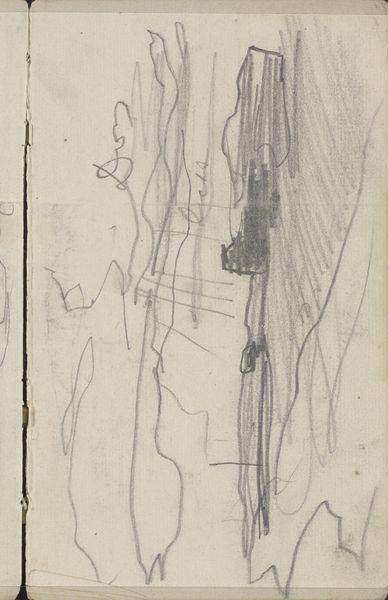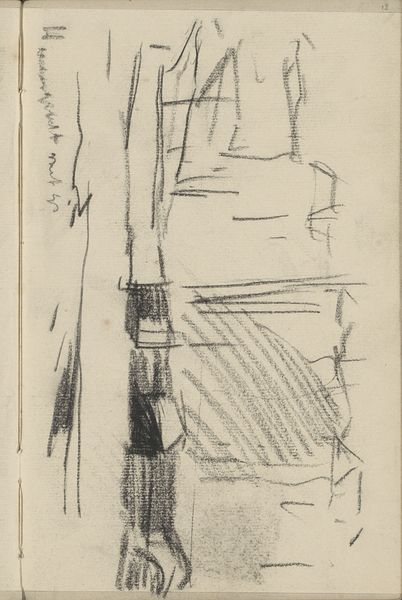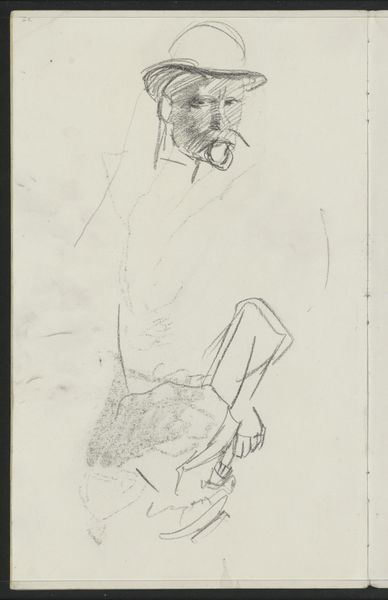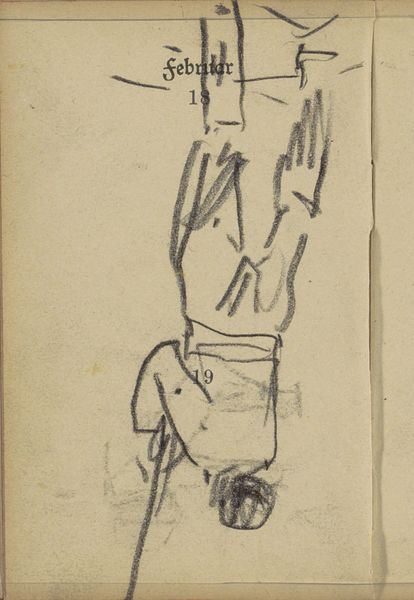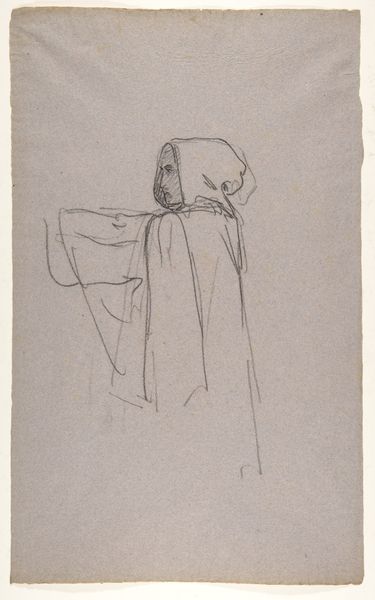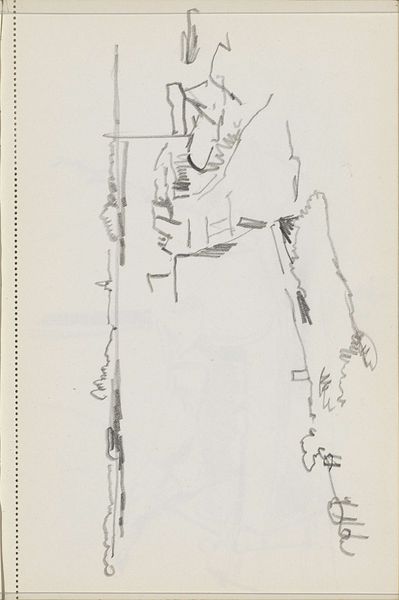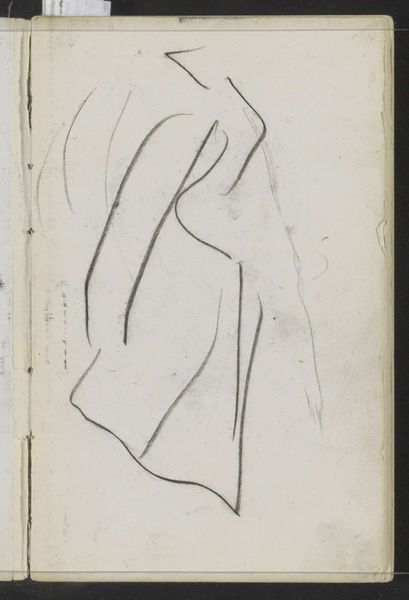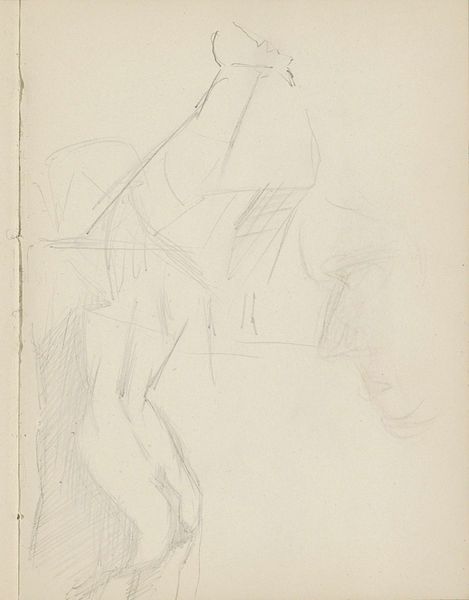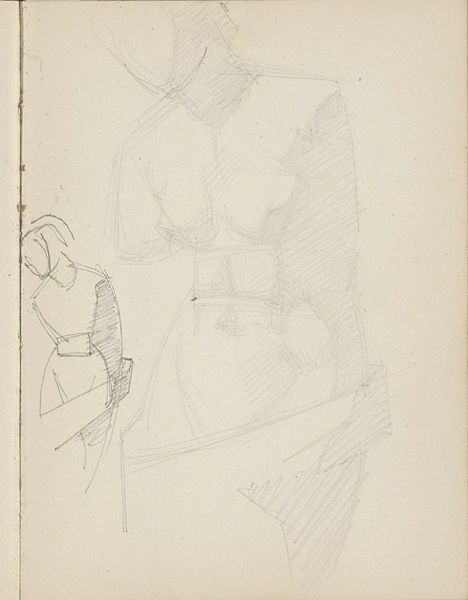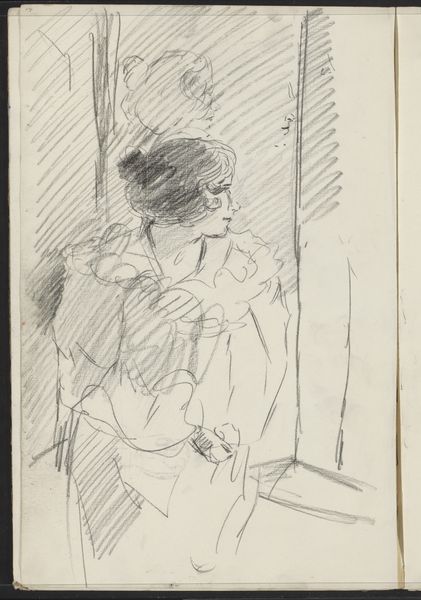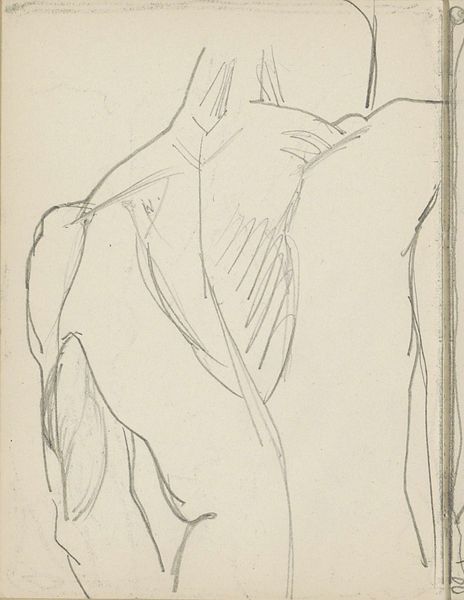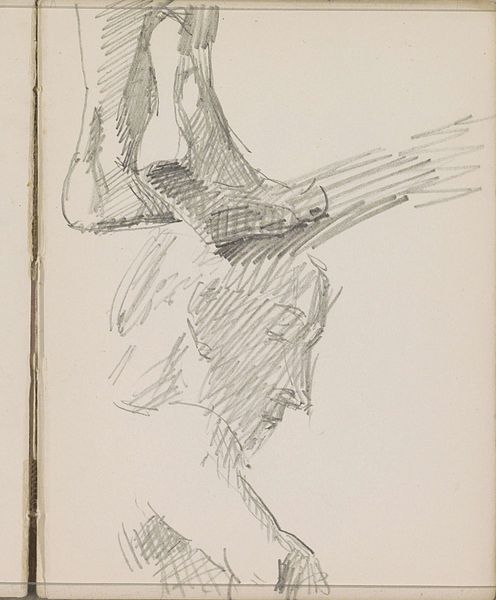
drawing, paper, pencil, architecture
#
drawing
#
pencil sketch
#
figuration
#
paper
#
pencil
#
nude
#
architecture
Copyright: Rijks Museum: Open Domain
Editor: We're looking at "Achterzijde van een staande naakte vrouw," or "Rear view of a standing nude woman," a pencil drawing on paper, likely created sometime between 1906 and 1945. I'm struck by the artist’s choice to depict the figure almost as if viewed through a screen, creating this intricate visual grid. What compositional elements jump out at you? Curator: Immediately, I am drawn to the tension created by the contrast between the delicate rendering of the figure and the sharp, almost architectural lines surrounding her. Consider the assertive verticality of the strokes framing the subject versus the soft, flowing contours used to suggest the human form. The layering and intersection of these marks creates depth. What purpose do you think the cross-hatching serves within this composition? Editor: I'd guess it is emphasizing the picture plane, preventing it from being purely representational. Also, that arched shape seems less like architecture and more like abstract shape framing a view...but I might need to see more examples! Does this emphasize any particular structural properties, then? Curator: Precisely. The superimposition of these geometric elements actively resists a purely illusionistic reading. It reinforces the work’s inherent flatness and acknowledges the materiality of the paper itself. We see the pencil not merely as a tool for depicting reality, but as an agent in creating a complex, self-referential visual system. Note how line, weight, and placement serve to both conceal and reveal the figure simultaneously. Editor: It's almost like the artist is deconstructing the traditional nude, not just representing it. I find it a little confusing because it also appears to show some architectural form, but does not seem as complete. It certainly encourages you to consider mark-making in art. Curator: Absolutely. The fragmented nature of the drawing demands an active viewer, one who is willing to piece together the various visual cues. The architectural details are another layer of visual complexity, a semiotic interruption and it invites an interpretation. This allows us to recognize not just an object, but as a testament to the artistic process itself. Editor: Seeing how the artist used basic visual language in such an evocative and powerful way really gives me new appreciation for looking closely. I need to spend more time on pencil and paper, learning more about drawing! Curator: Indeed. Such close observation fosters deeper understanding. Keep asking those questions!
Comments
No comments
Be the first to comment and join the conversation on the ultimate creative platform.

